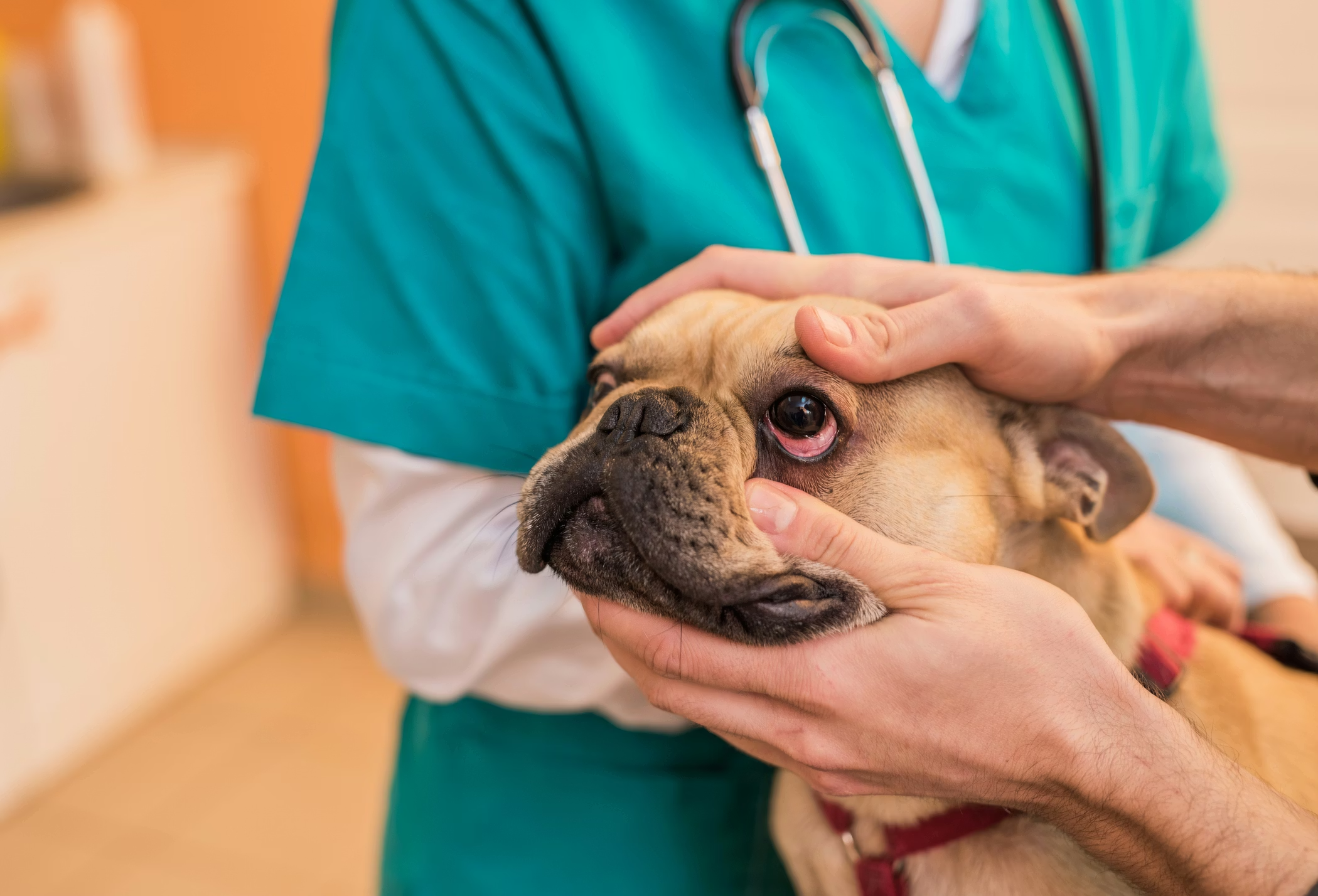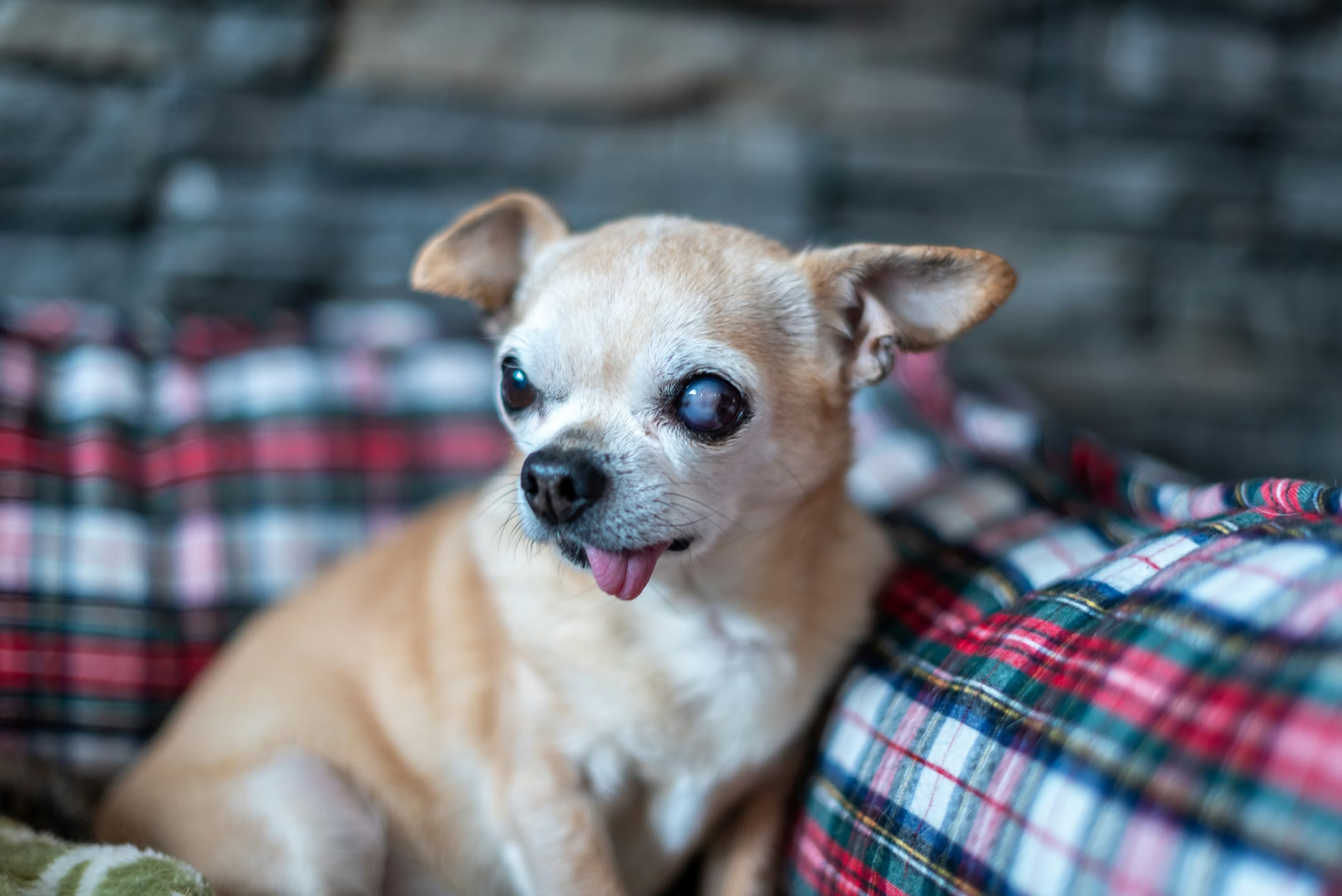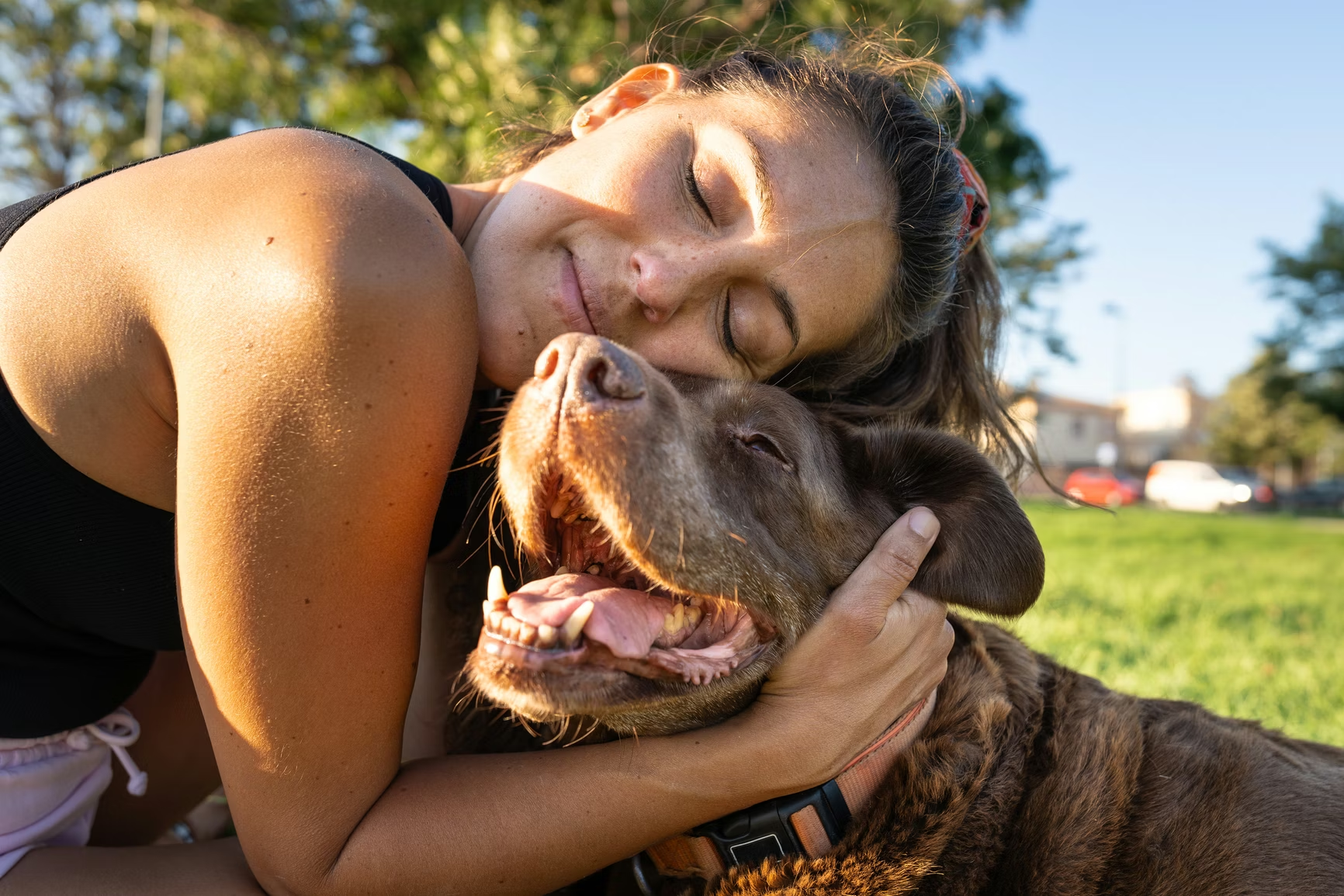Vision loss in dogs can be upsetting for both pets and pet parents. But, like with many medical conditions, knowledge is power. Understanding the signs, causes, and available treatments for blindness in dogs is crucial for managing this condition effectively. So, let’s shed light on vision loss in dogs and address the challenges associated with blindness in our canine companions.
Symptoms of blindness in dogs
Identifying the signs of deteriorating vision or blindness in dogs is an important first step for timely intervention and support. While some symptoms may be obvious, others are subtle and easier to overlook. Here are some signs to watch for:
- Bumping into objects: One of the most noticeable signs of vision loss is when a dog starts bumping into furniture, walls, or other obstacles they used to navigate easily. This change is especially evident in familiar environments where they have previously moved with confidence.
- Reluctance to move in new environments: Dogs that are losing their sight may hesitate to explore new areas. You may notice a reluctance to jump or climb stairs, navigate through doorways, or move from well-lit to dark areas, and vice versa.
- Changes in eye appearance: Physical changes in the eyes can include cloudiness or a bluish haze, eye redness, dilated pupils, and bulging eyes.
- Increased clumsiness: Misjudging distances, tripping over objects on the ground, or having trouble locating their toys may indicate vision impairment.
- Pawing or rubbing eyes: If a dog is experiencing discomfort in their eyes, they may paw at their eyes or rub their face against furniture or the floor.
- Behavioral changes: Dogs experiencing vision loss may show changes in behavior, such as increased anxiety, fearfulness in situations that didn’t previously bother them, or aggression when surprised.
- Difficulty in low light conditions: Dogs may have particular trouble seeing in dim lighting and show more uncertainty in these conditions compared to full light.
- Change in activity levels: A decrease in activity levels or a disinterest in playing can be a subtle sign of vision problems. Your pup may become less enthusiastic about activities that require good vision, such as fetching or finding their favorite toys.

Normal eye changes in aging dogs
As dogs enter their senior years, it’s normal for their eyes to change. One condition that often occurs is nuclear or lenticular sclerosis. This is a common change in the eyes of older dogs that involves a hardening and cloudiness of the lens, which, to pet parents, can resemble cataracts. However, unlike cataracts, lenticular sclerosis usually doesn’t significantly impair vision and doesn’t lead to blindness. It’s more like the human equivalent of getting older and not being able to read the newspaper as well.
A dog’s eyes with this condition may appear more cloudy or "glassy," especially in direct light. It’s important to differentiate between the two because cataracts can require medical intervention, whereas lenticular sclerosis is a benign, age-related change that doesn’t typically impact a dog’s quality of life. Your veterinarian is your best resource for evaluating your dog’s eyes.
Causes of blindness in dogs
Blindness in dogs can result from various factors, including genetics, injury, aging, and disease. There are also secondary causes that can lead to blindness in dogs. These include metabolic disorders (such as diabetes), hypertension, infections, autoimmune diseases, and corneal issues, among others.
Genetic eye diseases in dogs
Many genetic factors can contribute to blindness in dogs. The following are some of the genetic eye diseases that can lead to vision loss.
Progressive retinal atrophy
Progressive retinal atrophy (PRA) is a category of genetic disorders that includes rod-cone dysplasia, cone-rod dystrophy, and other conditions. It involves the gradual deterioration of the retina, leading to progressive vision loss.
Retinal detachment
Genetics can play a role in retinal detachment, though trauma, infections, or high blood pressure can also cause it. Retinal detachment can lead to sudden blindness if not treated promptly.
Primary lens luxation
This painful hereditary condition occurs when the lens dislocates from its normal position. It can lead to inflammation and glaucoma and, if not diagnosed and treated quickly, can result in blindness.
Corneal dystrophy
This condition affects the cornea’s transparency, causing it to have a cloudy appearance.
Cataracts
Cataracts in dogs cause the lens of the eye to become opaque, leading to decreased vision and potential blindness.
Glaucoma
Increased pressure within the eye can lead to glaucoma, a painful condition resulting in vision loss.
Collie eye anomaly
Collie eye anomaly is a genetic disorder that affects the development of the eye, potentially leading to blindness.
Achromatopsia
Achromatopsia, also known as “day blindness,” is a rare condition where dogs have light-sensitivity, affecting their vision in bright light.
Sudden acquired retinal degeneration syndrome (SARDS)
SARDS is a sudden-onset disease that leads to rapid vision loss. The causes of this disease are still being researched.
A Wisdom Panel DNA test can detect some genetic predispositions to eye conditions, including certain types of glaucoma and progressive retinal atrophy. By identifying risk early, you and your veterinarian will have valuable information when planning for the long-term care of your pup.

Dog blindness treatment
Treatment options vary depending on the cause of blindness. While some conditions can be treated with surgery or medication, others may not have a cure. In these cases, managing your dog’s environment to help them adapt to their vision loss is crucial.
To help your pup adapt, avoid changes to furniture configurations, use baby gates or fences to block access to stairways, and keep essential items like food and water bowls in familiar locations. It’s also important to protect your pet from external dangers they can’t see, such as moving vehicles our inground pools.
Commonly asked questions
What can I do to prepare myself and my dog for blindness?
Adapting your home to make it safer and maintaining a consistent layout can help your dog feel more confident and comfortable. Sound cues can also help your dog navigate its environment more easily.
Can my dog recover from blindness?
Recovery depends on the cause of the vision loss. Some conditions are treatable, while others may result in permanent blindness.
At what age do dogs start going blind?
Blindness can occur at any age, but age-related degeneration typically begins when dogs enter their senior years. For giant breed dogs, this life stage begins around five years of age, while for small and medium breed dogs, it begins around seven or eight.
What does a blind dog’s eye look like?
Physical signs can include cloudiness, redness to the eyes, or pupils that no longer respond to changing light.
Final thoughts
While vision loss in dogs can be challenging, many pets adapt remarkably well to blindness with the proper care and accommodations. Early detection is critical to managing eye conditions, so regular veterinary check-ups are essential. If you suspect your dog is experiencing vision problems, consult your veterinarian for a thorough evaluation.
Additional resources
https://cgejournal.biomedcentral.com/articles/10.1186/2052-6687-1-3














